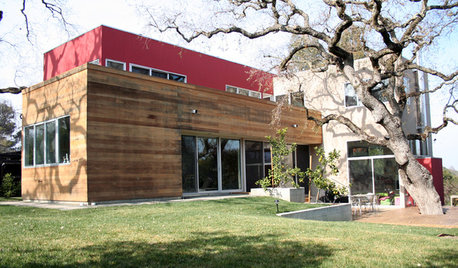Curcurbit saving distances
chloeasha
16 years ago
Related Stories

MOVINGRelocating Help: 8 Tips for a Happier Long-Distance Move
Trash bags, houseplants and a good cry all have their role when it comes to this major life change
Full Story
LIFEThe Top 5 Ways to Save Water at Home
Get on the fast track to preserving a valuable resource and saving money too with these smart, effective strategies
Full Story
HOME TECHSave Your Decor — Hide Your Media Stuff
When you tuck boxes, wires and speakers into walls and ceilings, all you'll notice is your favorite shows or music
Full Story
GREEN BUILDINGWater Sense for Big Savings
Keep dollars in your pocket and preserve a precious resource with these easy DIY strategies
Full Story
GREAT HOME PROJECTSUpgrade Your Windows for Beauty, Comfort and Big Energy Savings
Bid drafts or stuffiness farewell and say hello to lower utility bills with new, energy-efficient windows
Full Story
DECORATING GUIDESLook-Alikes That Save Money Without Skimping on Style
Whether in woodwork, flooring, wall treatments or tile, you can get a luxe effect while spending less
Full Story
MODERN ARCHITECTUREKeep Your Big Windows — and Save Birds Too
Reduce bird strikes on windows with everything from architectural solutions to a new high-tech glass from Germany
Full Story
GARDENING AND LANDSCAPINGOutdoor Design: Save that Tree!
Have Your Deck and Big Tree, Too — Build Around it for an Exceptional Living Space
Full Story
LIFEWorld of Design: See How 7 Families Live in Multigenerational Homes
What happens when three or more generations live within shouting distance of one another? More hugging than shouting, actually
Full Story
PATTERNGo for the Bold: 14 Great Ideas for Patterned Upholstery
Dare to distance yourself from neutral, solid furniture fabrics for rooms that spring to life
Full Story





zeedman Zone 5 Wisconsin
chloeashaOriginal Author
Related Professionals
Arlington Landscape Architects & Landscape Designers · Cottonwood Landscape Architects & Landscape Designers · Montgomeryville Landscape Architects & Landscape Designers · Canton Landscape Contractors · Annandale Landscape Contractors · Bridgeport Landscape Contractors · Dinuba Landscape Contractors · Laguna Hills Landscape Contractors · Leicester Landscape Contractors · Muttontown Landscape Contractors · Thornton Landscape Contractors · Austin Roofing & Gutters · Philadelphia Roofing & Gutters · The Colony Roofing & Gutters · Port Neches Roofing & Gutterszeedman Zone 5 Wisconsin
chloeashaOriginal Author